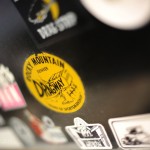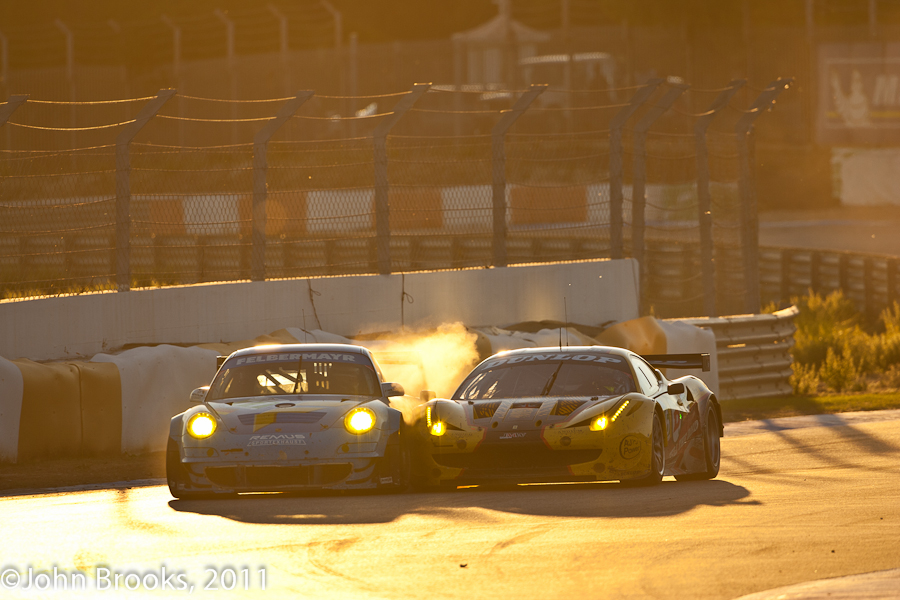Image being invited to the dance, and then, after preparing for the occasion, finding out that the invitation had been withdrawn. That, in effect, is the situation facing the competitors who run in the all-Porsche GTC category of the American Le Mans Series, who at this point won’t be allowed to participate next March in the ALMS’ Sebring 12-Hour 2012 season opener.
And, while there may not be much sympathy for these well off “gentlemen” drivers and their “rent a ride” car owners, in the larger picture the issue highlights the problems caused when one’s fate, in this case that of the ALMS, is determined not by one’s self, but by others. At the heart of all of this is the fact that Sebring will be a “dual” event which will not only be the opening round of the Panoz-owned series, but also the inaugural race of the highly anticipated FIA World Endurance Championship.
As it stands now, the GTC division will be excluded from the 12 Hours, whose entry list will be restricted to 60 cars, approximately half of which will be foreign visitors not running the full ALMS schedule, and who may or may not return for the Petit Le Mans finale. Indeed, adding insult to injury, it appears entirely likely the GTC clan will cut out of that affair was well.
Should things not change the GTC Porsche folks will be denied the chance to showcase themselves in the two most important 2012 rounds of the ALMS tour, something which could cripple their funding, both in terms of sponsorship and driver rental fees. About this time, you may be wondering why anyone should care other than those involved themselves. After all, the 911 GT3 Cup cars are patently slow moving obstacles to the rest of the rest of the ALMS field; moving chicanes that can cause unwanted accidents with their far quicker brethren.
Despite this, the fact remains that the GTC Porsches, along with the spec LMPC prototypes have saved the ALMS, which before they appeared had grids of only 25 or less, an unsustainable figure for a major league championship. Perhaps equally important are how the ties between the ALMS and the Automobile Club de l’Ouest, the organizers of Le Mans have shaped the series in the past and continue shape today.
For whatever reasons, when Panoz decided to create his series, he decided to do so in partnership with the ACO, leasing the technical regulations for the 24 Hour classic, and thus, in effect importing the Le Mans legacy to America. In the main, that decision has served him well, and the ALMS.
However, there have been problems in trying to formulate a season long championship around rules meant to govern a single event, particularly since that event and its ALMS offspring operate on different continents and in vastly different circumstances. The biggest of the problems over the years has been the size of the ALMS fields, which the better part of a decade had been too small for comfort.
That changed when the series introduced its two “spec” categories: the LMPC prototypes using French-built chassis powered by small block Chevrolet V-8s, and the Porsche-only GTC class. Now the ACO and the FIA are demanding that the Porsches stay home for Sebring, claiming that they do not fit the regulations proposed for the new FIA WEC.
The problem is that being denied access to the ALMS’ most important event has left many of the GTC contingent re-thinking their plans for 2012. As TRG boss Kevin Buckler puts it, “If they don’t let us race at the 12-Hour, I won’t run the series”, something echoed by the more cautious Alex Job. As he puts it, “I haven’t made any final decisions yet. But, given my need to serve my sponsors, I’m thinking along the same lines as Kevin.”
Given that between them, Job and Buckler had plans to enter no less than five GTC-spec 911 GT3 Cup cars, and given the fact that the class size in 2011 ranged between five and ten of the Porsches, their withdrawal could have a significant impact on the rest of the ALMS’ 2012 season. And, therein can be found the heart of the dilemma facing the ALMS.
While Sebring, with its dual status could be a major success story, what happens to the ALMS after the 30 foreign entries go home?
Clearly the prestige of its association with Le Mans, and the prestige of serving as the debut venue for the long awaited World Championship are of great benefit in establishing a new level of credibility for the ALMS. But, one has to ask: “At what price?”
No one believes that if the GTC community stays away for the rest of 2012 that the ALMS will automatically be doomed. However, it could be hurt at a time when self inflicted wounds do not lead the way to a better future. The ALMS and the ACO have a new agreement in place that gives the Americans much more freedom to chart their own course. Now is the time for them to use that freedom, something Buckler sums up with clarity when he says, “Keep in mind that the first world in the ALMS logo is the word ‘American.’ What we need is more American teams, not less.”
Buckler would not describe himself as a “prophet,” but in this case he’s right.
Bill Oursler, October 2011





















































































































































































































































